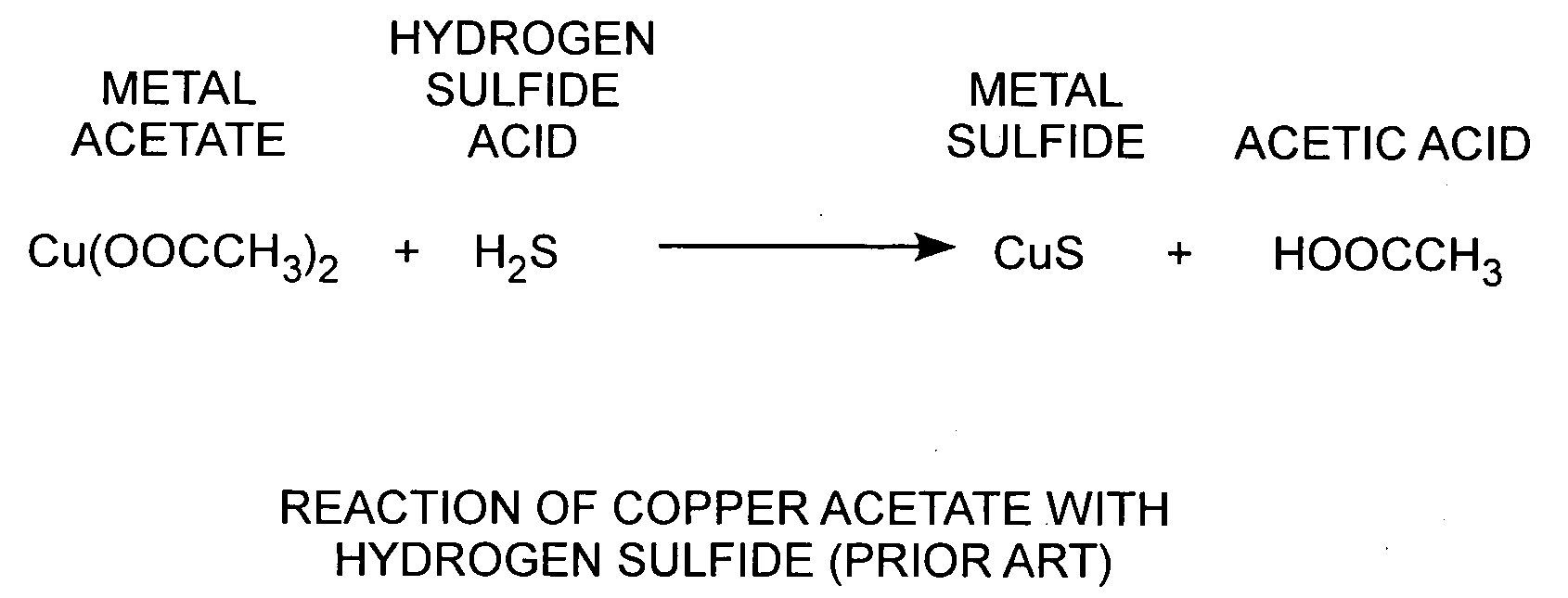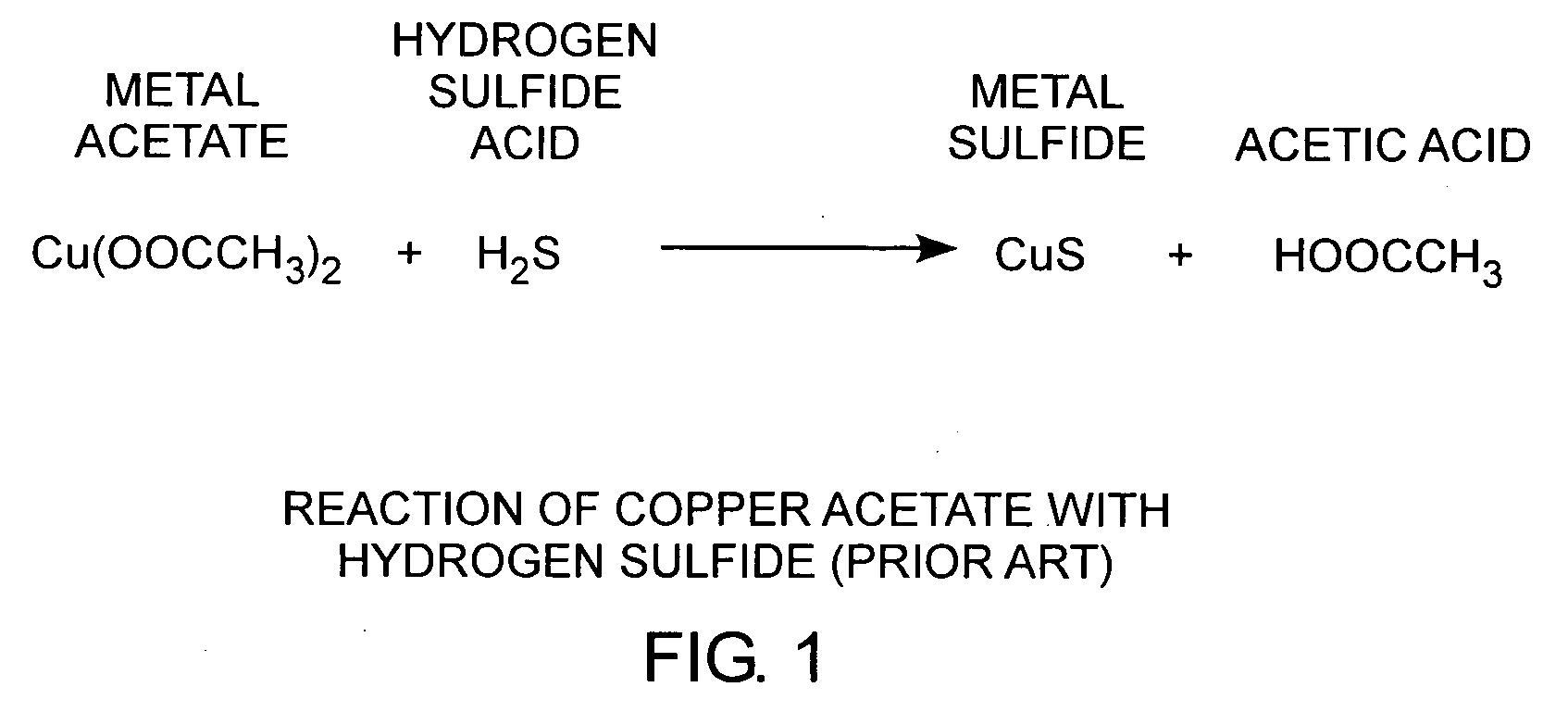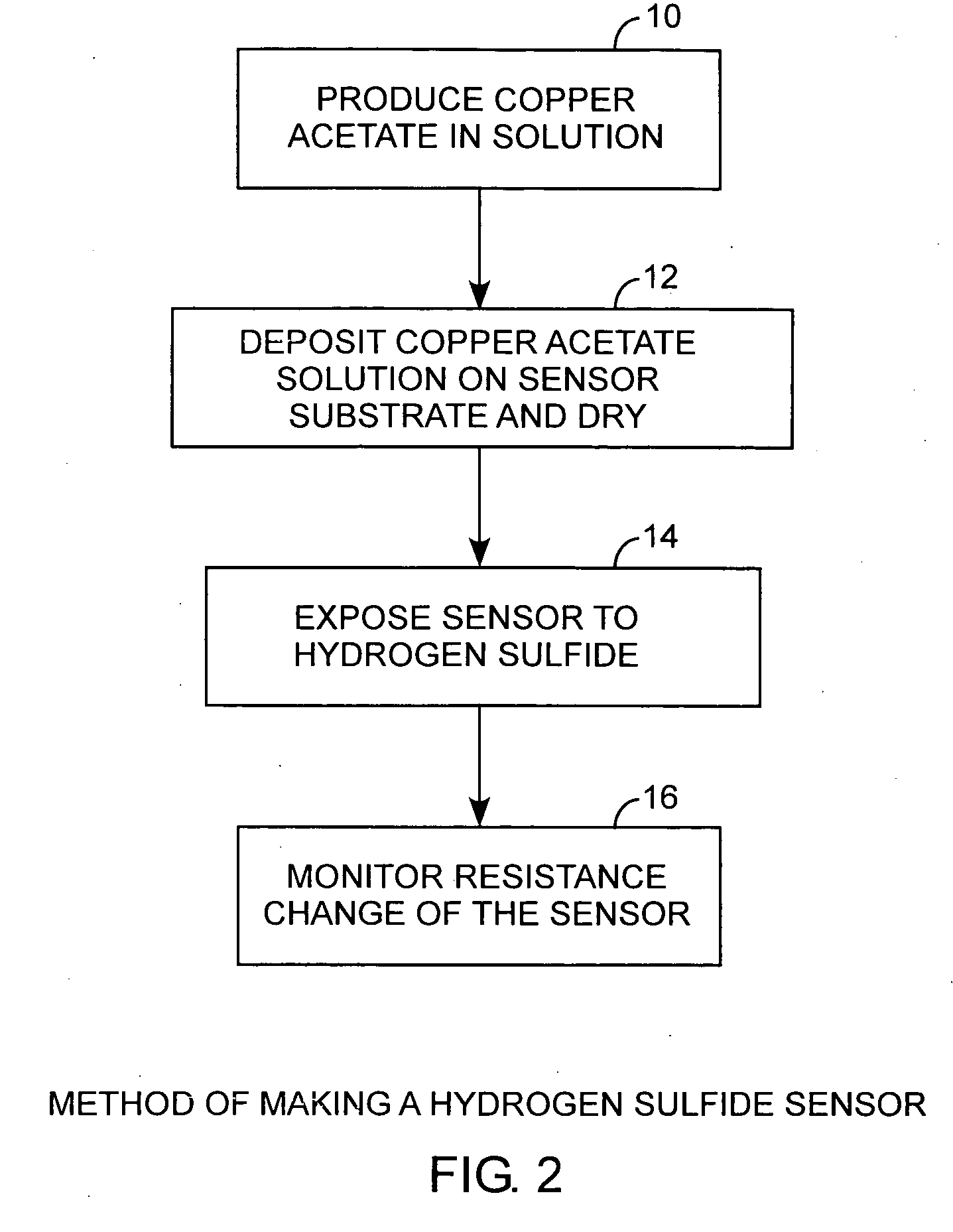Metal salt hydrogen sulfide sensor
a technology of hydrogen sulfide and metal salt, applied in the field of chemical sensors, can solve the problems of large conductivity changes induced
- Summary
- Abstract
- Description
- Claims
- Application Information
AI Technical Summary
Problems solved by technology
Method used
Image
Examples
Embodiment Construction
[0022]An embodiment of the invention is described with reference to the figures using reference designations as shown in the figures. Referring to FIG. 1, copper acetate Cu(CH2COO−)2 reacts with hydrogen sulfide acid H2S to form copper sulfide and acetic acid HOOCCH3. Copper sulfide is conducting. When a copper acetate film is exposed to hydrogen sulfide, a weak acid, the conductivity of the film changes. As such, copper acetate films can be used as a hydrogen sulfide detector.
[0023]Referring to FIGS. 1, 2, and 3, and more particularly to FIGS. 2 and 3, a hydrogen sulfide sensor is made by producing 10 a metal salt, such as copper acetate, in solution and depositing and drying 12 the copper acetate on a sensor substrate. In practice, when the sensor is exposed 14 to hydrogen sulfide, a resistance monitor can be used to measure the change in resistance for detecting the presence of hydrogen sulfide. A pair of electrodes is disposed on the sensor substrate and is used to make electric...
PUM
 Login to View More
Login to View More Abstract
Description
Claims
Application Information
 Login to View More
Login to View More - R&D
- Intellectual Property
- Life Sciences
- Materials
- Tech Scout
- Unparalleled Data Quality
- Higher Quality Content
- 60% Fewer Hallucinations
Browse by: Latest US Patents, China's latest patents, Technical Efficacy Thesaurus, Application Domain, Technology Topic, Popular Technical Reports.
© 2025 PatSnap. All rights reserved.Legal|Privacy policy|Modern Slavery Act Transparency Statement|Sitemap|About US| Contact US: help@patsnap.com



